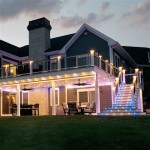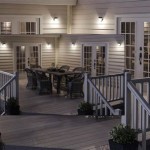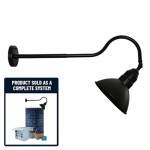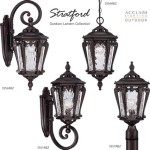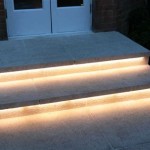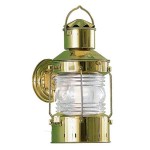Chalk Paint for Outdoor Wood Furniture: A Comprehensive Guide
Chalk paint has gained considerable popularity in recent years, particularly for its ease of use and ability to transform furniture. While often associated with interior projects, chalk paint can also be effectively employed on outdoor wood furniture, provided specific considerations are addressed. This article will delve into the intricacies of using chalk paint on outdoor wood furniture, exploring its advantages, disadvantages, application process, and necessary protective measures to ensure long-lasting results. The longevity and appearance of chalk-painted outdoor furniture depend significantly on proper preparation, application techniques, and the selection of appropriate topcoats.
Understanding Chalk Paint and its Properties
Chalk paint is a decorative paint known for its matte finish and excellent adhesion properties. Its composition typically includes calcium carbonate, pigments, and a binder. The high mineral content contributes to its characteristic chalky texture. Unlike conventional paints, chalk paint often requires minimal surface preparation, such as sanding, making it a favored choice for upcycling and furniture restoration projects. The porous nature of chalk paint allows it to bond readily with various surfaces, including wood, metal, and even fabric. However, this very porosity presents a challenge when used outdoors, as it makes the painted surface susceptible to moisture absorption and environmental damage.
The "chalky" finish is not inherently waterproof or weather-resistant. Therefore, it necessitates the application of a protective topcoat designed for outdoor use. Without this crucial step, the paint can become easily damaged by rain, sun, and temperature fluctuations, leading to premature deterioration. It's important to differentiate between chalk paint and other types of paint, such as milk paint or acrylic paint, as their formulations and performance characteristics are distinct. While all three can be employed on furniture, chalk paint’s unique properties demand specific handling, especially for outdoor applications.
One of the key advantages of chalk paint is its versatility in achieving various aesthetic effects. It can be easily distressed, layered, and manipulated to create a vintage or shabby chic look. This flexibility appeals to those seeking to personalize their outdoor furniture and achieve a unique style. However, these decorative techniques must be balanced with the practical requirements of outdoor durability. Overly distressed surfaces, for instance, can leave the underlying wood more vulnerable to the elements. The choice of chalk paint brand is also a factor, as the quality and composition can vary, influencing the paint's adhesion, coverage, and overall performance.
Preparing Wood Furniture for Chalk Paint
Proper preparation is paramount to ensuring the success of any painting project, and this is particularly true for outdoor wood furniture. The first step involves cleaning the furniture thoroughly to remove dirt, grime, and any existing loose paint or varnish. A mixture of soap and water, along with a scrub brush, is typically sufficient for this purpose. For stubborn stains or mildew, a specialized wood cleaner may be required. It’s imperative to allow the furniture to dry completely before proceeding to the next stage.
Once the furniture is clean and dry, inspect it for any damage, such as cracks, splinters, or rot. Repairing these imperfections before painting is essential to prevent further deterioration. Wood filler can be used to fill cracks and holes, while loose splinters should be sanded smooth. In cases of significant rot, replacing the affected wood may be necessary. Sanding is an essential part of surface preparation. While one of chalk paint's appeals is that it frequently does not require sanding, for outdoor use, the surface should be lightly sanded to provide a better "key" for the paint to adhere to. This is especially true if the wood has a glossy finish or has been previously varnished or painted. A medium-grit sandpaper (around 120-grit) is generally adequate. After sanding, remove all dust with a tack cloth to ensure a clean surface for painting.
For furniture that has been previously painted with a dark color, or if the wood is naturally very dark, applying a primer may be beneficial. A primer helps to prevent the underlying color from bleeding through the chalk paint, ensuring a more uniform and vibrant finish. Choose a primer specifically designed for exterior use and compatible with chalk paint. Apply the primer in thin, even coats, allowing it to dry completely before proceeding with the chalk paint application.
Applying Chalk Paint and Protective Topcoats
The application of chalk paint is relatively straightforward, but certain techniques can enhance the final result. Use a high-quality brush or roller designed for use with chalk paint. Apply the paint in thin, even coats, working in the direction of the wood grain. Avoid applying thick coats, as this can lead to drips and uneven drying. Allow each coat to dry completely before applying the next. Two to three coats are typically sufficient to achieve full coverage. Sanding lightly between coats with a fine-grit sandpaper (around 220-grit) can create a smoother finish.
After the final coat of paint has dried, consider applying decorative finishes, such as distressing or antiquing. These techniques involve sanding away some of the paint to reveal the underlying wood or applying a dark wax to highlight details. If distressing, be mindful of leaving bare wood exposed to the elements. Any bare wood should be sealed with the recommended topcoat. Once the desired aesthetic is achieved, the most critical step is the application of a protective topcoat. This topcoat is essential for sealing the porous chalk paint and protecting it from moisture, UV rays, and other environmental factors.
Several types of topcoats are suitable for use on outdoor chalk-painted furniture, each with its own advantages and disadvantages. Exterior-grade waxes, specifically formulated for outdoor use, offer a natural, matte finish and provide a degree of water resistance. However, waxes require regular reapplication to maintain their protective properties. Polyurethane sealers provide a more durable and water-resistant finish than waxes, but they can sometimes yellow over time or create a slightly glossy sheen. Water-based acrylic sealers offer a good balance of durability, water resistance, and UV protection. They also tend to be less prone to yellowing than polyurethane sealers. Regardless of the chosen topcoat, apply it in thin, even coats, following the manufacturer's instructions. Multiple coats are typically recommended for optimal protection.
Maintaining Chalk-Painted Outdoor Furniture
Even with proper preparation and application of protective topcoats, chalk-painted outdoor furniture requires regular maintenance to ensure its longevity. Regularly clean the furniture with a mild soap and water solution to remove dirt and grime. Avoid using harsh chemicals or abrasive cleaners, as these can damage the painted surface. Inspect the furniture regularly for signs of damage, such as cracks, peeling paint, or water stains. Address any issues promptly to prevent further deterioration. Touch up any damaged areas with chalk paint and reapply the topcoat as needed.
To minimize exposure to the elements, consider covering the furniture or storing it indoors during periods of inclement weather, especially during the winter months. This can significantly extend the lifespan of the painted finish. Periodically inspect the topcoat and reapply it as needed, typically every one to two years, depending on the climate and the type of topcoat used. Proper maintenance is key to preserving the beauty and durability of chalk-painted outdoor wood furniture.
In areas with high humidity or frequent rainfall, it's crucial to ensure adequate drainage around the furniture to prevent water from pooling and causing damage. Consider elevating the furniture slightly on blocks or feet to allow for better air circulation. By following these guidelines, one can enjoy the unique aesthetic of chalk-painted furniture in an outdoor setting for years to come. Attention to detail in preparation, application, and maintenance will contribute significantly to the overall success and longevity of the project.

Painting Outdoor Furniture With Chalk Paint At Home Ashley

Painting Outdoor Furniture With Chalk Paint At Home Ashley

Painting Outside Furniture With Annie Sloan Chalk Paint J Adore La Maison

How To Paint Patio Furniture With Chalk

Painting Outdoor Furniture With Chalk Paint At Home Ashley

Before And After Outdoor Table Chairs Painted With Annie Sloan Chalk P Furniture Patio Collection Painting Wood

Rescued Patio Table Re Do Duck Egg Blue Chalk Paint Artsy Rule

Painting Outdoor Furniture With Chalk Paint At Home Ashley

How To Paint Patio Furniture With Chalk

Painting The Outdoor Furniture How I Got That Barnwood Color
Related Posts
